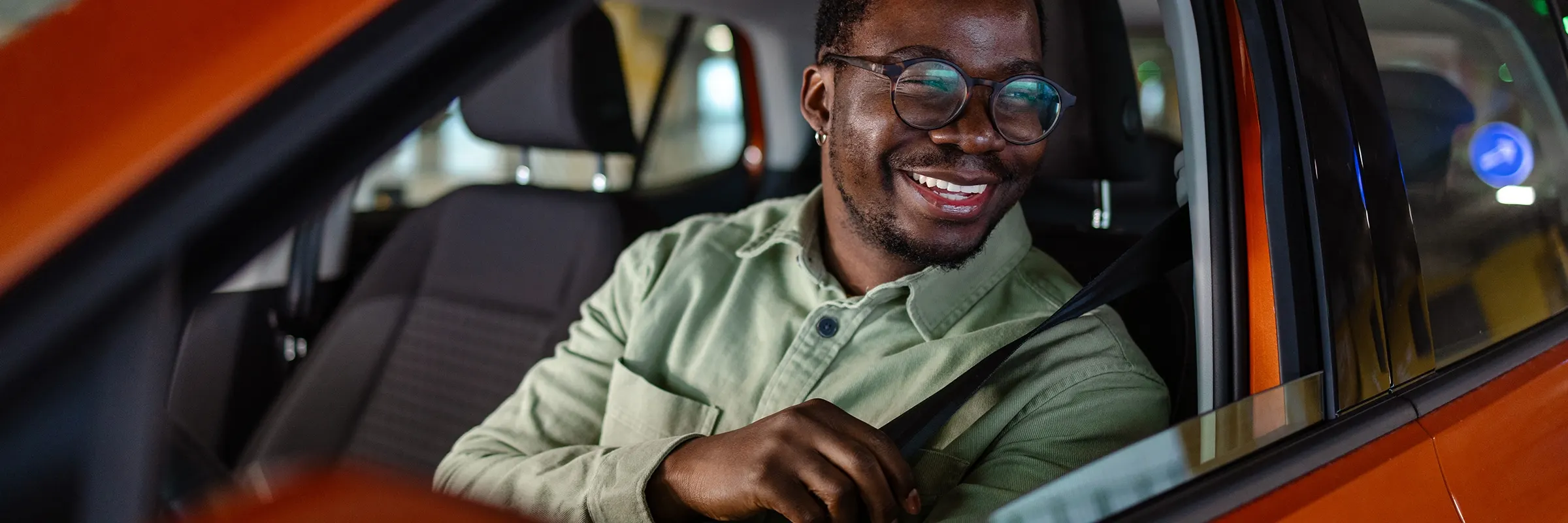Like rainy days or taxes, the fact that your car’s value will depreciate over time is a reality you might not embrace but it’s best to prepare for. If you have plans to trade in, resell or return your vehicle following a lease program, understanding what contributes to those decreasing returns can help you stay ahead of a few of them.
Many factors come into consideration when evaluating a vehicle’s value. Some of these elements are beyond your control (such as the age of your vehicle), but there are steps you can take to keep that value up as you hit the open road.
Choose your parking spots carefully
Small things such as door dings, bumper scratches, dents and bits of fading plastic or paint might not seem like much on their own, but collectively they can diminish your car’s value significantly. While repair work is always an option, it’s also going to cost you. You can work to avoid these minor mishaps by being mindful of where you leave your car:
Park away from other vehicles whenever possible
Choose spots that leave your vehicle less vulnerable to passing or turning vehicles
Keep your vehicle in a garage or the shade, away from the harsh and aging effects of ice and sun
Slight imperfections are bound to happen but being mindful of where you park and avoiding potential hazards can help minimize the minor knicks and collective damage that can put a massive dent in your car’s value over time.
Keep it clean
Prime parking spots can help protect your car's exterior, but exposure to elements like bugs, salt and pollen will still work against your paint over time. Thoroughly washing and waxing your set of wheels regularly can help maintain your vehicle’s quality internally and externally. This is especially important if you live in a colder climate.
Most frigid regions salt their roads to prevent ice buildup on the streets. The downside? Salt deposits on your car can eventually lead to rust, which can be particularly damaging as it spreads across the interior and exterior of your vehicle. Get your car washed and undercoated with a rust-proof spray to help prevent this costly buildup during the winter months.
Remember, what’s on the inside counts too
While the outside is what most of the world sees when it comes to your car, don’t neglect the inside when you’re working to retain its value. Keeping your car interior clean can prevent body discoloration, faded carpets, and permanent stains — all things that can help you get top dollar when it’s time to sell or trade in. And don’t forget about conditioning your leather periodically to prevent scratches and flaking.
You can also stay ahead of interior damage with rubber floor mats and seat covers to maintain the quality of your interior in between cleaning sessions. And if you’re a smoker, you may want to consider keeping cigarette breaks outside your car since smoke can be challenging to remove and can significantly affect the value of your vehicle.
Make (recorded) maintenance a priority
Regular oil changes and up-to-date maintenance can help keep your car running smoothly, which already helps keep values up, but a thorough maintenance record is even more valuable. Save your receipts from oil changes, tune-ups, tire rotations and other services to demonstrate your commitment to long-term vehicle care and get top dollar when the time comes to sell.
Stay up to date on any potential recalls and be proactive with check-ups (and don’t put off any known issues). Unaddressed recalls or necessary repairs can decrease your resale price and lead to more costly maintenance in the future.
Maintaining your vehicle is not without costs. Go beyond your manufacturer’s warranty for coverage that encompasses all of your car needs at a low fixed price, like Ally’s month-to-month Flex Coverage.
Watch the mileage
When the time comes to trade in or sell your vehicle, one of the first questions anyone will ask is: “How many miles does it have?” And while you can’t completely control the mileage on your car, restricting your trips when it’s feasible can help. Avoid unnecessary rides and carpool when you can to help keep the miles off. If you’re considering a cross-country trip, price out the difference for flying or even renting a car. Also bear in mind that after 40,000 miles a vehicle’s value will typically drop considerably (although depreciation tapers off significantly at that mark). Of course, the whole point of having your own ride is to get where you need to go, so don’t stress the distance too much.
Know your vehicle’s value
While every vehicle is going to depreciate over time, some retain more value than others. Educating yourself on which types, makes and models retain value can help when choosing your next car and when assessing the potential resale value of your vehicle. Online resources like Kelley Blue Book are a great place to start your research so you'll be armed with reliable numbers.
Prepare for down the road
One of the inevitable truths of being a car owner is that from the moment you drive it off the lot, the value begins to depreciate. It might be unavoidable, but it doesn’t mean the value of your car is completely beyond your control. With a few small steps you can keep it in fighting shape and help keep its value up for when the time comes to sell it.


